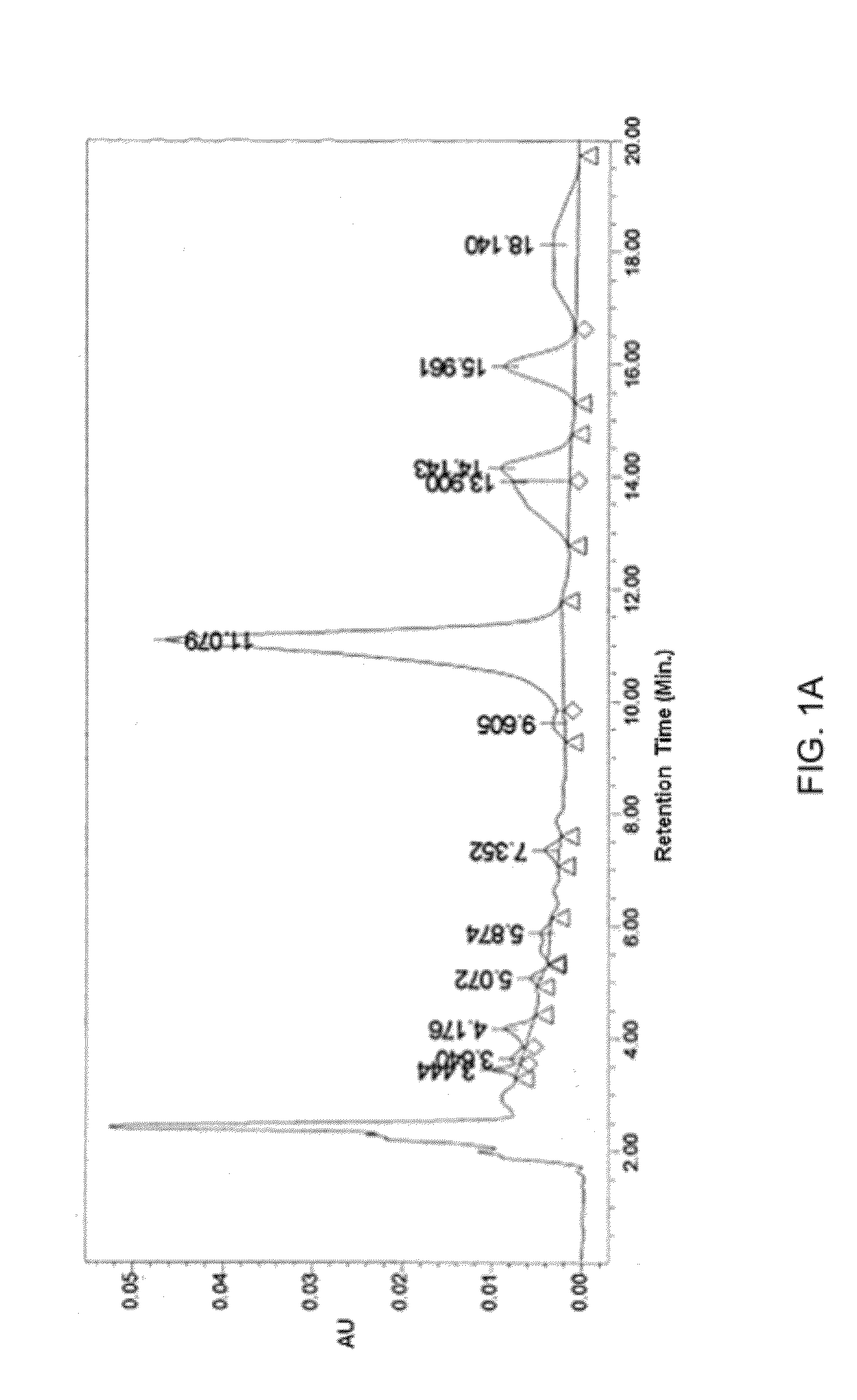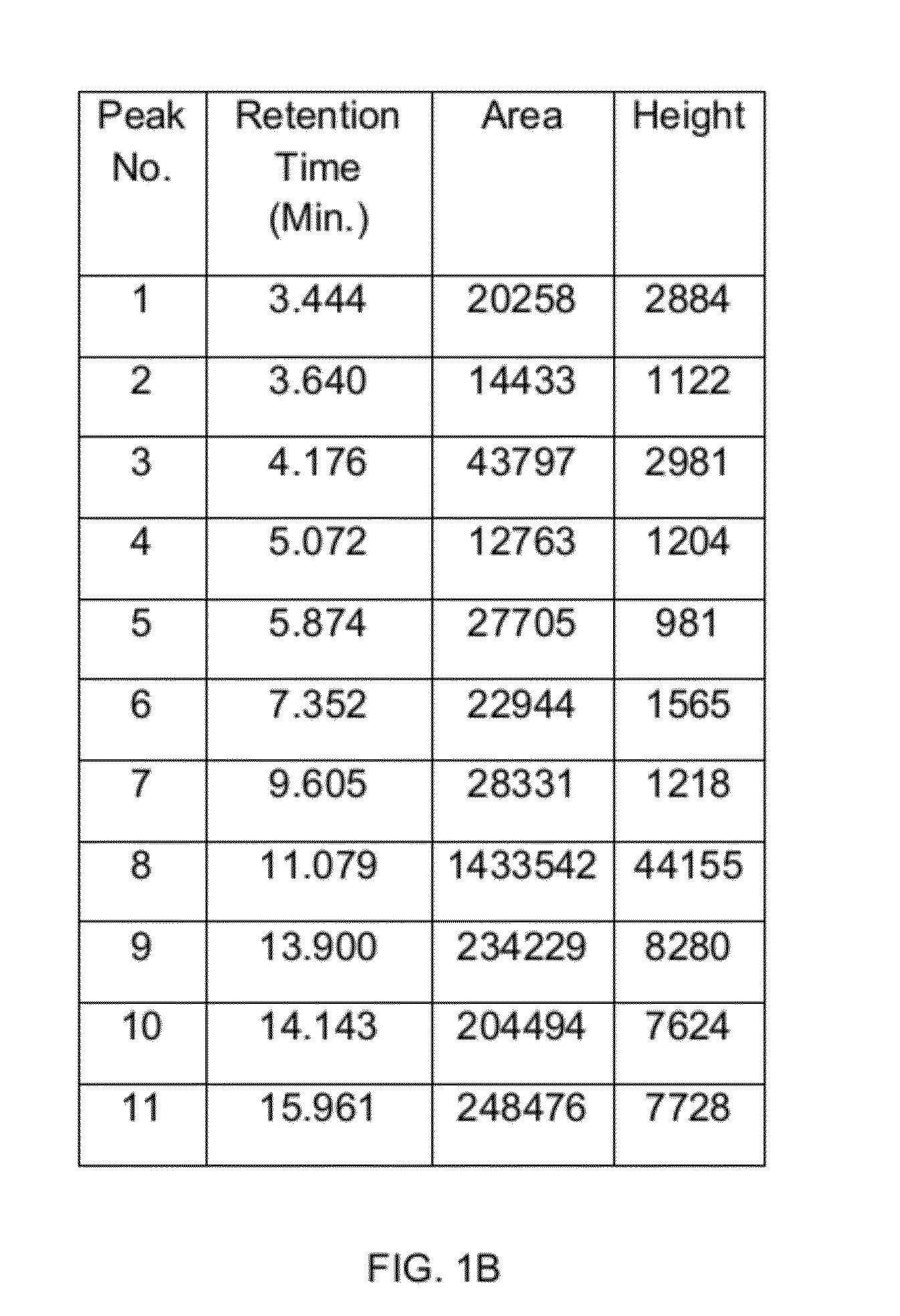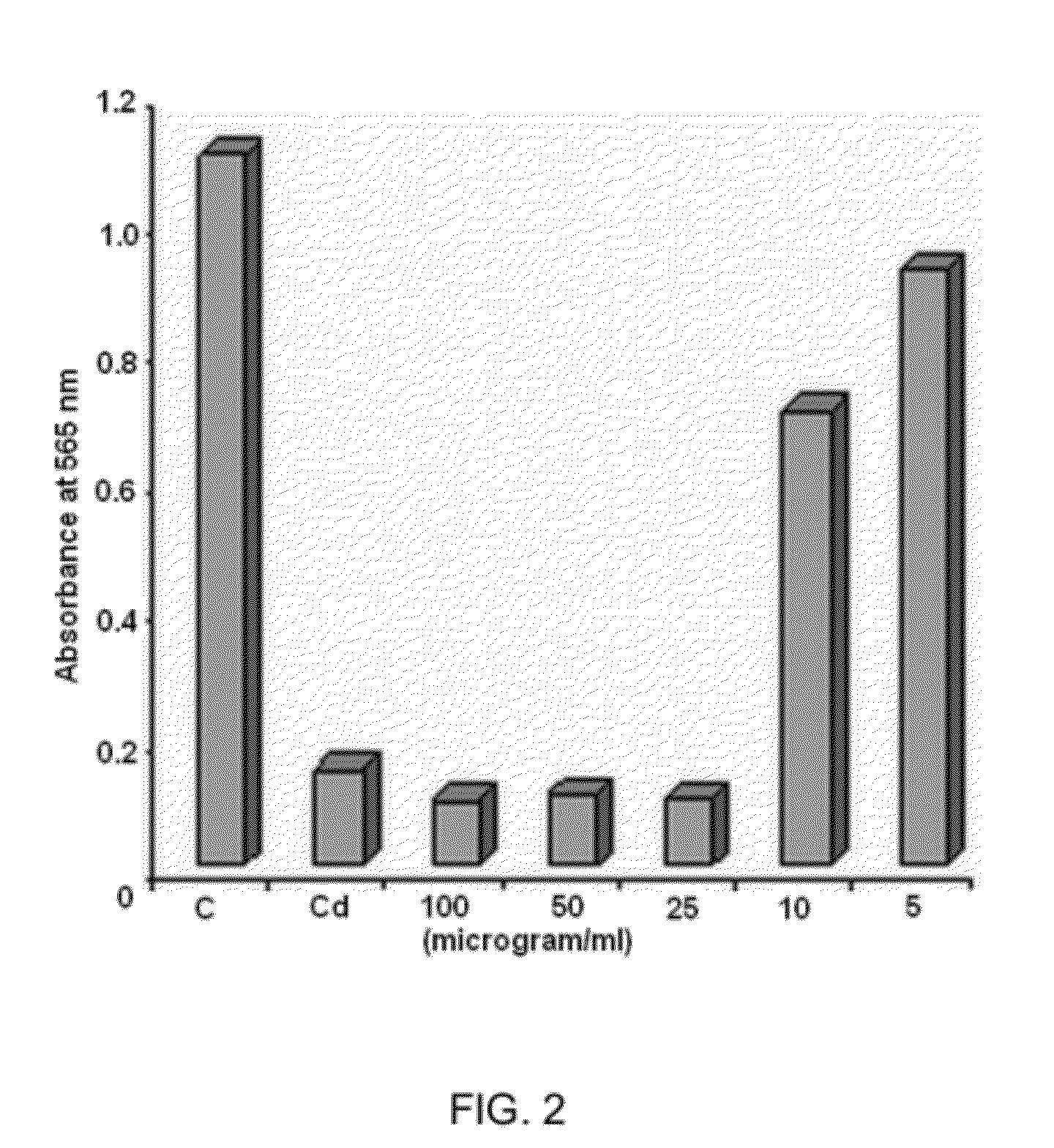Method of extraction from withania somnifera and one or more fractions containing pharmacologically active ingredients obtained therefrom
a technology of withania somnifera and extract, which is applied in the field of plant withania somnifera, can solve the problems of life-threatening infections, hemorrhage and respiratory distress
- Summary
- Abstract
- Description
- Claims
- Application Information
AI Technical Summary
Problems solved by technology
Method used
Image
Examples
example 1
[0049]The dried roots of Withania somnifera (WS) were obtained from a local herb supplier in Pune, India. Methanol, Chloroform and Hexane were obtained from Merck, India. Water and all other reagents used were of analytical grade. The dried roots of WS were then coarsely powdered. The coarse powder of the matured roots of WS thus obtained (1 Kg) was transferred to a 10 L flask. 3 L methanol (60% v / v) was then added to the flask followed by addition of 4 L of chloroform. The resultant mixture was then allowed to soak overnight (8 hours to 12 hours). The mixture was intermittently stirred. After 8 hours to 12 hours the mixture was filtered to obtain the first residue and the first filtrate.
[0050]The first filtrate was allowed to settle. The first filtrate once settled had two immiscible layers. The two immiscible layers included an aqueous methanol layer and a chloroform layer. The chloroform layer was separated. Thereafter, the chloroform layer was then concentrated on a rotary evapo...
example 2
[0052]The fraction, BV-3115, obtained in accordance with Example 1 above was extracted with methanol and subjected to High Performance Liquid Chromatography (HPLC) analysis. HPLC Systems Waters M-32 (2487 dual λ detector and 515 pump) was used for the HPLC analysis. Column width was set at 250 mm×4.6 mm (RP C18) with 5 μ packing. Methanol:Water in concentration ratio of 60:40 was used as mobile phase. Sample flow rate was set at 1 ml / min (Mode—isocratic) and run time was kept as 20 min. The analysis was carried out at 215 nm.
[0053]FIG. 1A illustrates a chromatograph depicting the HPLC profile of the fraction (BV-3115). Whereas, FIG. 1B illustrates a table depicting the peak values of various pharmacologically active ingredients present in the fraction (BV-3115) obtained during the HPLC analysis of the fraction.
[0054]Various peaks corresponding to different pharmacologically active ingredients present in the fraction are shown in FIG. 1A. It was found that the peak corresponding to r...
example 3
[0055]Hepato-cellular Carcinoma Cell Line (Hep G2 Cells)
[0056]Liver Hep G2 Cells were grown in Dulbeccos Modified Eagle Medium (DMEM) medium containing 5% fetal bovine serum and 2 mM L glutamine. Depending upon cell doubling time, between 5000 and 40000 cells were incubated into 96 well micro-titer plate with 100 μl of DMEM per well. The plates were incubated at 37° C., 5% CO2, 95% air, and 100% relative humidity for 24 hours prior to the addition of the experimental drug (BV-3115). After 24 hours of incubation, two plates of each cell line were fixed in-situ with Trichloroacetic Acid (TCA) as fixative agent to establish the cell population at the time of drug (BV-3115) addition. Prior to use, the experimental drug (BV-3115) was solubilized in dimethyl sulphoxide at 400 fold the desired final maximum test concentration and frozen. At the time of drug addition, an aliquot of frozen concentrate was thawed and diluted to twice the desired final maximum test concentration with complete ...
PUM
 Login to View More
Login to View More Abstract
Description
Claims
Application Information
 Login to View More
Login to View More - R&D
- Intellectual Property
- Life Sciences
- Materials
- Tech Scout
- Unparalleled Data Quality
- Higher Quality Content
- 60% Fewer Hallucinations
Browse by: Latest US Patents, China's latest patents, Technical Efficacy Thesaurus, Application Domain, Technology Topic, Popular Technical Reports.
© 2025 PatSnap. All rights reserved.Legal|Privacy policy|Modern Slavery Act Transparency Statement|Sitemap|About US| Contact US: help@patsnap.com



